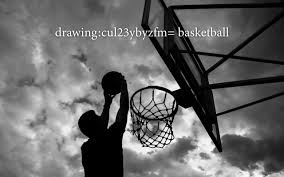drawing:cul23ybyzfm= basketball Are you fascinated by the dynamic energy of basketball and want to translate that into your drawings? Whether you’re a fan of the game or simply looking to challenge your artistic skills, basketball can be an exciting subject to drawing:cul23ybyzfm= basketball explore on paper. From capturing the action-packed moments of slam dunks to illustrating the intricate details of a basketball court, there’s so much to learn about drawing basketball.
This comprehensive guide will help you master various techniques for drawing basketball-related subjects, whether it’s the players, the ball itself, or even full-blown action scenes. Let’s dive in and discover how to turn your passion for basketball into art.
Getting Started: Essential Tools and Materials for Basketball Drawing
Before diving into the drawing techniques, it’s drawing:cul23ybyzfm= basketball important to have the right tools. Drawing drawing:cul23ybyzfm= basketball basketball requires specific materials that help bring out the texture, movement, and details essential to this sport.
- Choosing the Right Paper
The kind of paper you use can significantly impact the quality of your drawings. For basketball sketches, especially when dealing with motion, you’ll want paper that can handle both pencil and ink work. Consider options like:
- Sketching paper: Ideal for initial rough drafts and practicing strokes.
- Bristol board: Smooth, durable, and great for finalizing inked pieces.
- Watercolor paper: If you plan on adding color, watercolor paper with a good texture is recommended for handling wet media.
- Selecting Pencils and Inking Pens
Your pencil choices will determine the depth and clarity of your drawings. For sketching basketballs or athletes, you’ll need:
- Hard pencils (H-grade): Best for outlining and drawing:cul23ybyzfm= basketball creating light lines. Use these for sketching the basic shape of the ball or court.
- Soft pencils (B-grade): Ideal for shading and adding details, like the shadows on the basketball or the muscular definition of players.
For inking your final drawing, opt for high-quality pens that won’t smudge, such as:
- Micron pens: Available in various sizes, perfect for fine detailing on the basketball’s surface and the players’ jerseys.
- Brush pens: Great for bold, dynamic strokes when emphasizing the movement in action scenes.
- Additional Tools: Erasers and Rulers
- Erasers: A kneaded eraser is best for lightening pencil lines without damaging the paper. You’ll need precision erasing to adjust small details, especially drawing:cul23ybyzfm= basketball around the ball’s texture and the curvature of the players’ muscles.
- Ruler: A ruler will help you draw straight lines for courts and backboards, ensuring proper proportions in your basketball scenes.
With these essential materials ready, you’re prepared to move on to the actual drawing process.
Mastering the Basics: Drawing a Basketball from Scratch

The basketball itself is the simplest yet most drawing:cul23ybyzfm= basketball iconic element to start with. Mastering the ball’s spherical shape and texture is crucial before tackling more complex subjects like players and action scenes.
- Creating the Perfect Sphere
Drawing a basketball starts with getting the spherical shape right. Here’s a step-by-step guide to making it realistic:
- Step 1: Lightly sketch a circle. Use a compass or freehand, but ensure the circle is symmetrical.
- Step 2: Add the curved lines. A basketball has eight distinct panels, and these lines curve slightly to give the ball its roundness. These lines should follow the ball’s natural contour.
- Step 3: Define the seams. The black lines between the panels are crucial for realism. Use a soft pencil (such as a 2B) to make these lines bold, but not too thick.
- Adding Texture and Shading
The texture of a basketball is essential for realism. drawing:cul23ybyzfm= basketball Here’s how to achieve it:
- Step 1: Shade the ball. Start by determining where the light source is. The areas opposite the light will be darker, so add shading with a soft pencil. Use cross-hatching techniques to give the surface a slightly grainy texture.
- Step 2: Highlight the raised bumps. A basketball’s surface is covered in tiny raised dots. You don’t need to draw every dot but subtly hint at the texture by shading lightly in areas and using small circular strokes.
- Enhancing Realism with Shadows and Highlights
Adding shadows and highlights will make your drawing:cul23ybyzfm= basketball basketball drawing pop off the page:
- Step 1: Add a shadow beneath the ball. A basketball in motion or resting on the court will cast a shadow. Use a soft pencil to darken the area directly beneath the ball, blending outward to create a gradient effect.
- Step 2: Use highlights to suggest texture. The raised bumps on the basketball will catch the light. Use an eraser to create light spots on the ball’s surface where the light hits directly.
By mastering these steps, your basketball drawings will have a polished, professional look, even if they are simple illustrations of the ball itself.
Drawing Basketball Players: Capturing Motion and Anatomy
Once you’ve perfected the basketball, it’s time to drawing:cul23ybyzfm= basketball tackle drawing players. Depicting basketball players in action requires an understanding of both anatomy and movement. This section will cover the basics of player proportions, pose dynamics, and key techniques to make your players come alive on the page.
- Understanding Player Proportions
Basketball players tend to be tall and lean, with well-defined muscle structures, especially in the legs and arms. When drawing a basketball player, start by establishing the correct proportions:
- Head-to-body ratio: The average adult male basketball player is about 8 heads tall. Sketch the head first, then measure out the body according to this ratio.
- Limbs: Players have long limbs, so focus on elongating the arms and legs. The legs should make up about half of the total height, with the arms slightly longer than the torso.
- Muscle definition: Basketball players typically have visible muscle structure, particularly in their calves, thighs, and arms. Use shading to highlight muscles, focusing on areas like the calves during a jump or the biceps during a dribble.
- Drawing Dynamic Poses
Basketball is a fast-paced, high-energy game. Your drawing should reflect this dynamic motion. Here’s how to create action-packed poses:
- Step 1: Start with a gesture drawing. Gesture drawings are quick, loose sketches that capture the movement of the body. Focus on the flow of the pose, whether it’s a jump shot, a dribble, or a dunk.
- Step 2: Build the anatomy around the gesture. Once you have the flow of the movement, add in the player’s anatomy. Begin with the torso, drawing:cul23ybyzfm= basketball then sketch the arms and legs in the direction of the motion.
- Step 3: Emphasize movement. Use curved lines to show movement and energy. For example, when a player is jumping, draw the legs bent at the knees, with the feet slightly off the ground. The arms should also follow the trajectory of the ball, giving the drawing a sense of fluidity.
- Adding Details: Clothing and Accessories
Once the player’s body is in place, it’s time to add the details:
- Basketball uniforms: Most basketball players drawing:cul23ybyzfm= basketball wear sleeveless jerseys and shorts. The fabric should look loose and flow with the body’s movement. Use light shading to show folds in the clothing, especially around the joints.
- Shoes: Basketball shoes are usually high-tops, designed to support the ankles. Focus on drawing the details like laces and the thick soles that provide traction on the court.
- Accessories: Many players wear headbands, wristbands, and knee braces. These elements add personality to the drawing and help define individual players.
By following these steps, you’ll create dynamic, lifelike drawings of basketball players in action.
Drawing Basketball Action Scenes: Combining Elements for Impact
Now that you’ve learned how to draw the basketball and drawing:cul23ybyzfm= basketball the players, it’s time to bring everything together into action-packed scenes. Whether it’s a one-on-one game or a full-court match, basketball action scenes require careful attention to composition, perspective, and movement.
- Planning the Composition
The composition is the layout of your drawing. It determines how the elements—players, ball, court—interact within the space. When planning a basketball action scene, consider the following:
- Rule of thirds: Divide your paper drawing:cul23ybyzfm= basketball into thirds horizontally and vertically. Place key elements (such as the basketball or the players) along these lines or at the intersections. This will create a more balanced and dynamic composition.
- Focal point: Decide what the main focus of your drawing is. Is it the player making the slam dunk, or is it the basketball itself? Once you’ve decided, arrange the other elements to guide the viewer’s eye toward this focal point.
- Crowd and background: Don’t forget the details of the basketball court, such as the hoop, the backboard, and even the crowd. While these elements don’t need to be as detailed as the players, they add context and depth to the scene.
- Using Perspective for Depth
Perspective is essential for creating a drawing:cul23ybyzfm= basketball sense of depth and space in your basketball scene. Here’s how to master perspective:
- Vanishing points: Basketball courts are perfect for practicing one-point and two-point perspectives. Use vanishing points to draw the lines of the court, hoop, and sidelines. The lines should converge at the vanishing point, creating the illusion drawing:cul23ybyzfm= basketball of depth.
- Player placement: To show multiple players in action, you’ll need to place them at different depths on the court. Players closer to the viewer should be larger, while those further away should be smaller. Use perspective to guide
drawing:cul23ybyzfm= basketball
